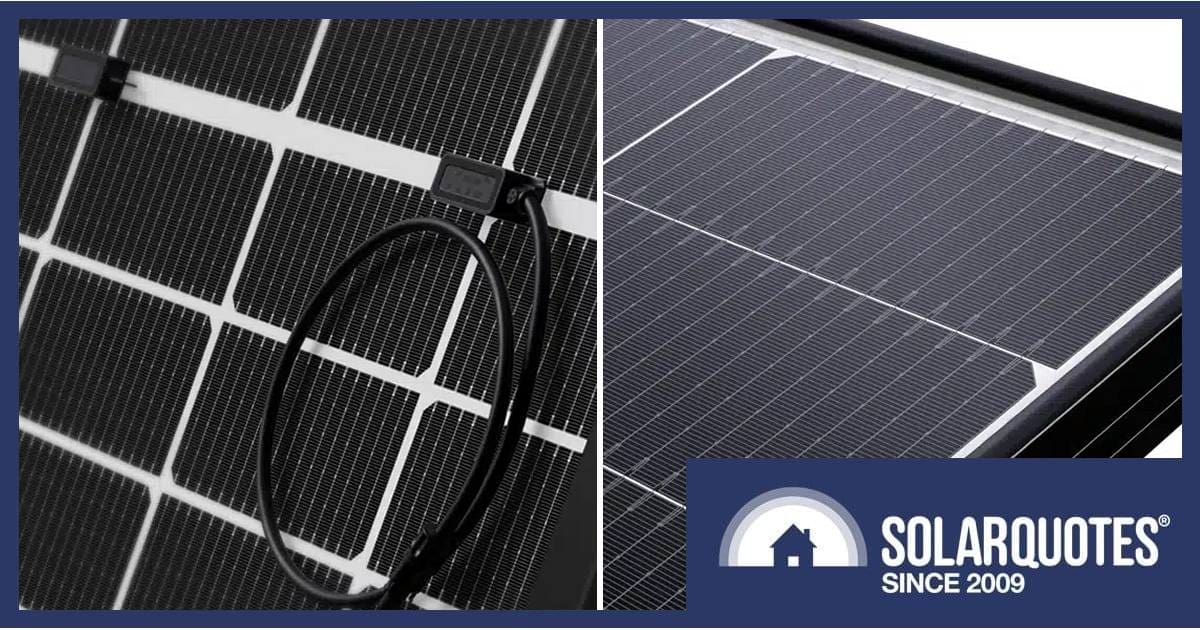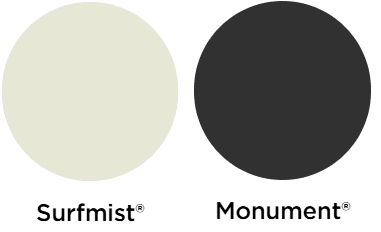
More solar panel manufacturers are cranking out bifacial modules these days and the price gap is closing. But are they worth installing on your home’s rooftop?
What Is A Bifacial Solar Panel?
In conventional solar panels, sunlight hitting the front of the panel is converted to electricity and the back of the panel has an opaque backsheet. But in a bifacial module, light can also be harvested from the back of the panel. These modules are glass/glass – meaning they have a glass sheet on the front side and on the back.
The boost in output can be significant in optimum conditions. Hold that thought.
Bifacial Panels On Residential Rooftops
In the majority of residential installations, conditions for a bifaciality boost are anything but optimum. Panels are usually installed flush with the roof, around 10 – 15 centimetres above it. In those circumstances even a light coloured roof won’t provide much reflection – and a dark roof even less. Bifacial solar panels can also be trickier to install if they are frameless; although many are available with standard frames.
In these scenarios, while installing bifacial panels will achieve little in terms of extra power output (perhaps a couple of percent at best), it won’t cause any harm either. Where there may be some benefit is if the panels are going on a flat roof with tilt frames, particularly if the roofing material has reflective attributes.
The Solar Reflectance Index (SRI) is a percentage that measures a material’s ability to reflect solar energy and release absorbed energy, with black being 0 and white being 100. Just looking at a couple of Colorbond colours (Classic finish) commonly used in roofing materials, Surfmist has an SRI of 81 and Monument has an SRI of 27 – a big difference.

Image credit: BlueScope Steel Limited
Really, these modules are best suited to utility-scale solar farms where they really come into their own, and some commercial applications. However, around the home they could be used for some carport and pergola projects where the panels are basically the roofing material.
Are There Any Advantages?
Bifacial solar panels can be more durable due to the two layers of glass offering increased protection. But you can also get monofacial dual glass panels – for example, in the Trina Vertex S+ range; which are very affordable. Bifacial modules also generally have a lower temperature coefficient, meaning they tend to perform better than equivalent monofacial panels in the heat – but that also depends on installation conditions.
So, Why Even Consider Bifacial?
Not only are more solar panel manufacturers making them, but some are only making bifacial modules. Winaico (which makes good gear) springs to mind – their current lineup are all bifacial. So, if there’s a brand you’re particularly fond of and that’s all they make; it’s not really a problem.
Note that most bifacial solar panels are rated by their front side capacity; e.g. a 440W panel means 440W capacity from the front side. Back-side production should be a separate figure and more of an estimate rather than hard and fast numbers. You might also come across the terms “bifaciality factor”, or coefficient, which is the measurement of how well a bifacial solar cell’s rear side can generate power compared to its front side. Usually, it’s in the region of 70% – 90%; but bear in mind that’s the potential and not the real world performance on your rooftop.
Related: Learn everything you need to know about choosing solar panels for your home.

 RSS - Posts
RSS - Posts



I have Bifacial panels installed across two tin roofs (shiney type), half are on tilts and they are facing about 5⁰ with as azimuth of about 20⁰.
On a kWh/kWp ratio I don’t think they perform any better than a traditional panel would.
I have a 10kw north facing system on my house with standard single sided panels. After joining the solar industry as a salesman, I currently sell 440w bifacial panels. The manufacturer claims in the brochure that these units have a 25% increase in performance over the single sided design. I explain to customers the performance increase relates only to situations where there is diffuse light (cloud or shade). 440w panels of either design should produce 440w of power per hour in ideal, full sun conditions. My own system produces over 9kw in ideal conditions but drops to well under 3kw in cloudy conditions.
I recently went around to a nearby clients place to help her re-program a pool pump. We both have the same sized systems overall and as it was a cloudy day, I fired up the apps for both her and my system to check the difference. I was pleasantly surprised to see her system producing around 25% more power than mine. Yes there were other variables such as my system being older, different brand inverters and different roof orientations (mines better than hers), so this was far from scientifically perfect as a comparison. However at the end of it all I now have panel envy. It is my belief that a bifacial design, all other things being equal, have a measurable and significant performance benefit over the single sided design. It also makes sense given light can get to the solar cells from both sides.
Our company are already removing 440w panels from failed systems and many are showing signs of micro cracking in the glass. As solar cell performance is only being tweaked, the main change for higher output panels is their physical size is simply getting bigger. The bigger panels get, the more potential they have to flex. There is no doubt the bifacial (double laminated glass) panels are both stiffer and stronger than the more traditional single layer design of glass top sheet with the non structural plastic back sheet.
If you installed them vertically- facing east west- you’d get early morning and late afternoon power, right?
Yes, the panels will produce power in both period but having them postitioned in a less than optimal angel means their production will be lowered. No idea if the gains will be more than the loss or ont. Someone can probably calculate it
PVwatts will calculate yield pretty well.
Feel sorry that you didn’t catch the core point. The main reason of offering dual glass product is because the Topcon solar cell will soon be seeing degradation under some circumstances due to the moisture getting into it. The best solution is to use dual glass, providing much better waterproofing capability. Besides, I double that you’ve ever consider two pain points that most of the installers hate about dual glass, 1. Weight, and 2. Easy to break during transport.
Winaico is a brand that barely heard in the market, no idea why it is recommended here.
Hi Lee,
If you move in quality solar circles, Winaico certainly have a market presence, as evidenced by their recent distributorship with MM Greentech Electrical Wholesalers.
We have performed our own testing and found that even if flush mounted flat to a roof, bifacial panels outperformed their monofacial counterparts in low light conditions. Ie early morning, late evening and overcast days. So if you can pickup a bifacial panel for a similar price point and it is a similar wattage ie 440W, it absolutely will perform better than it’s monofacial counterparts. Just consider any extra production a bonus.
As to a split e-w array, I was considering this scenario on another roof as the house is fed on 2 phase. The original install was on a e-w roof which failed on 2 points. The original install company went belly up without any warning. After 5-6 years every panel ha a hot spot in the middle, output volts no load dropped by 70 volts, current OK. Finally an object fell out of the sky ( airplane on flight path?) smashed panel. System taken off line waiting replacement.
SO, I used Finn’s quoting system, but the quotes were too cheap (poor quality equipment) or too expensive due to the excessive mark up. I tried not to look like a cashed up customer!
Brian Andrews
The reason all the Chinese manufacturers pivoted to Bifacial was they were the only panel type that were exempt from the tarrifs in the US.
Now that exemption is closed I expect we’ll see a return to mono panels for rooftop installs.
Regards Bifacial panels- if put on a residential roof & knowing that each year, there is a percentage drop in efficiency and given that the underside gets marginal ‘work’, compared to the top face, could they be flipped over in 20 years time? Ie:- the underside being ‘ newer’ in terms of its working life. I realise that there are connections on the underside. Is that potentially doable or even viable. Just thinking outside the box.
What is not considered in the specifications is that many of these panels have thinner glass at 1.2mm compared to 3.2mm. Its a consideration where hail is a concern. They often dont have a load rating or a wind rating. I dont think they are worth my consideration. We wont sell or install them. In our last hail storm it was all the competitors customers calling on us to fix there smashed bifacial panels. We dont even like to repair these substandard systems.